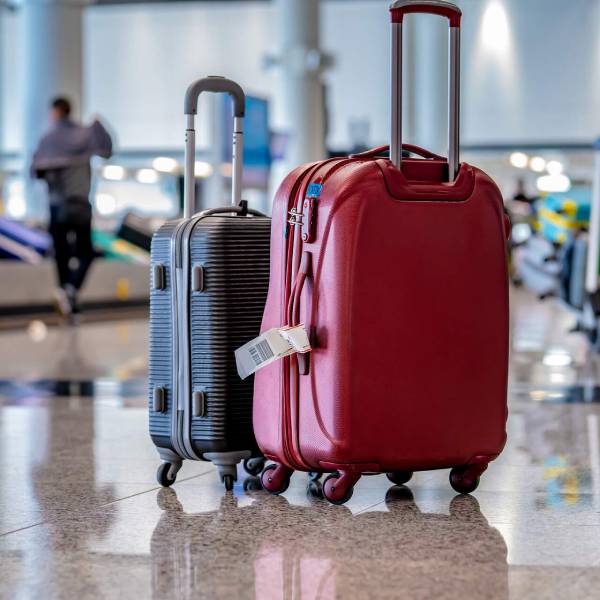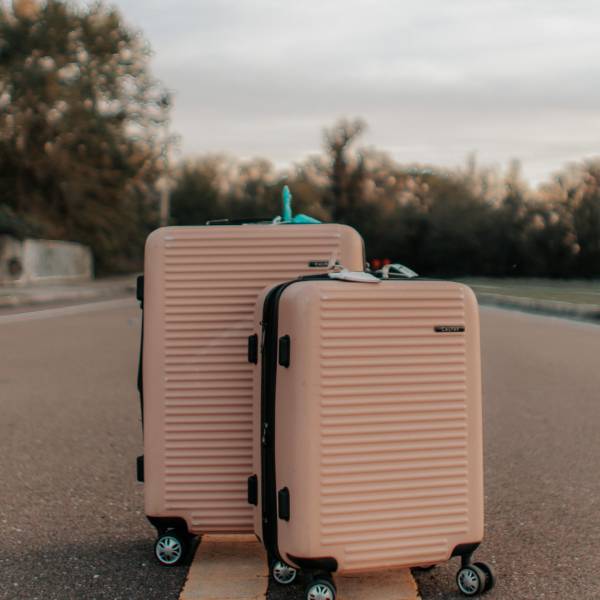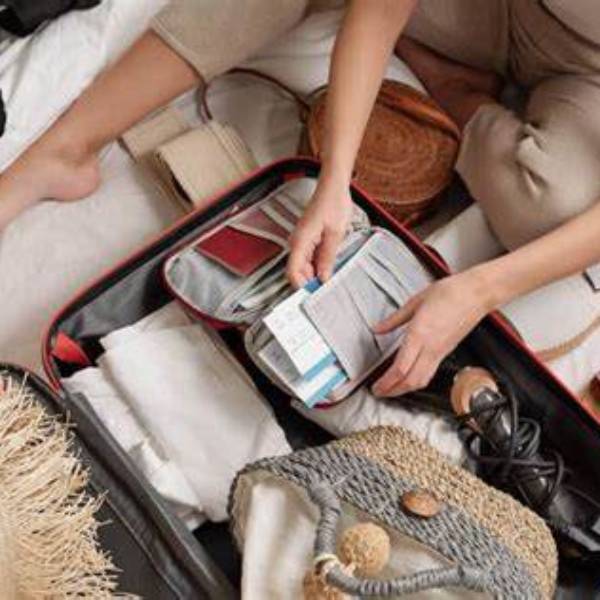Traveling involves many decisions, especially regarding luggage. One common question arises: is a carry on a checked bag? Understanding the difference helps travelers make informed choices.
Defining Carry-On and Checked Bags
Understanding Carry-On Bags
Passengers must understand the differences between carry-on bags and checked luggage. A carry-on bag has specific size guidelines that airlines enforce strictly. Each airline lists its size limits, so checking them before packing is essential. Most carry-on bags fit in overhead compartments or under the seat in front. Choosing a suitable carry-on can be advantageous because it saves time at the airport. It allows travelers to avoid long waits at baggage claim. Furthermore, having essential items nearby boosts comfort during the flight.

The Benefits of Checked Bags
Checked bags, however, offer more space for bulkier items and personal belongings. Passengers can pack clothing, shoes, and other necessities without the limitations of carry-on size. Although checked bags often incur fees, many travelers find the added space worth the extra cost. Additionally, checking baggage allows passengers to travel lighter at the terminal. They avoid the hassle of maneuvering through crowded spaces with large bags.
For long trips, checked bags can accommodate souvenirs and other purchases too. Nonetheless, travelers should ensure their bags meet the airline’s weight limits. Preparing ahead can minimize extra charges at the airport. Ultimately, knowing the difference between carry-on and checked bags helps passengers make informed decisions. This knowledge enhances their travel experience and can lead to a more enjoyable journey.
Airline Policies on Baggage
Understanding Airline Baggage Policies
Next, travelers must examine the baggage policies of different airlines. Each airline establishes its own rules regarding carry-on and checked bags. Some airlines provide generous allowances, while others impose strict limits. Therefore, it is crucial to read these guidelines before booking a flight. Many airlines publish their policies online, making it easy for travelers to access this information. By reviewing these details, travelers can avoid confusion and frustration during their trip. Additionally, checking for updates can help travelers stay informed about any recent changes.
Avoiding Unexpected Fees
Travelers should also remain vigilant about potential baggage fees. Some airlines charge extra for checked bags or overweight items. Understanding these fees can help reduce costs and prevent last-minute surprises at the airport. Diligently researching fees for each airline can save money and ensure a smoother travel experience.
Comparing baggage policies among different airlines allows travelers to choose the best option for their needs. Moreover, this knowledge empowers travelers to pack more effectively and avoid unnecessary expenses. Ultimately, being aware of baggage allowances and fees enhances the travel experience. By preparing in advance, travelers can focus on enjoying their journey rather than worrying about logistics.

Why Choose a Carry-On?
The Advantages of a Carry-On
Choosing a carry-on bag provides undeniable convenience for travelers. You can quickly access your belongings while on the plane. This ease of access allows you to grab essentials without disturbing others. Moreover, you avoid long check-in lines, which can often be frustrating and time-consuming. You save valuable time in the airport by carrying your bag onto the plane. This efficiency not only reduces stress but also enhances your travel experience. Without the hassle of waiting for checked luggage, you can disembark promptly and start your adventure right away.
Control and Security of Your Belongings
Another significant reason to bring a carry-on is the control it gives you over your belongings. You eliminate the risk of lost luggage, which frequently disrupts travel plans. When you keep your bag with you, you know exactly where your items are at all times. Additionally, you protect your valuables from potential damage during transit. You can also prioritize your personal items, such as medications and electronics.
In the event of flight changes, a carry-on allows for quick adjustments. You can simply grab your essentials and go, ensuring flexibility in your travel plans. Therefore, the benefits of choosing a carry-on bag extend beyond mere convenience, emphasizing security and efficiency. Your travel experience improves when you retain control over your items while enjoying the journey.
The Case for a Checked Bag
Benefits of Checked Baggage
Many travelers find that a checked bag suits their needs better. For instance, long trips often require more packing space. A checked bag offers ample room for extra clothing, toiletries, and other essentials. This additional capacity helps travelers prepare for various activities or climates. Moreover, checked baggage can eliminate the hassle of squeezing everything into a small carry-on. Travelers can pack larger items without worrying about size restrictions.
Considerations for Packing
When choosing between a checked bag and a carry-on, travelers should consider their plans. If they expect to need bulky winter clothes or sports gear, a checked bag becomes essential. Airlines also maintain higher weight limits for checked luggage, making it easier for travelers to pack without stress. Additionally, checked bags may provide more freedom during travel.
Passengers won’t need to lug heavy bags through the airport or worry about fitting everything overhead. They can also focus on enjoying their trip instead of managing space constraints. Even though checked bags have fees, the simplicity they offer can outweigh these costs. Overall, travelers should weigh these factors when deciding how to pack.

Tips for Packing a Carry-On
Packing a carry-on efficiently streamlines your travel experience. Start by prioritizing your essential items, such as documents and medications. Keep these crucial items at the top of your bag for quick access. This way, you won’t have to dig through your luggage when you need something important. Next, pack your electronics in an easily accessible compartment. By doing this, you can quickly pull them out during security checks. It also helps if you pack chargers and other small accessories in separate pouches. This organization prevents cables from tangling and makes everything simpler to find.
Utilizing Packing Techniques
Using packing cubes can significantly enhance your packing efficiency. These cubes help you categorize clothing by type or outfit. You can roll clothes to save space and minimize wrinkles. Additionally, consider wearing your bulkiest items, such as jackets or heavy shoes, during travel. This strategy frees up valuable space in your carry-on. If you plan and know what to bring, fitting everything becomes manageable. With a Smart Travel Suitcase and packing cubes, you can maximize space and stay organized while traveling effortlessly.
Make a checklist prior to packing to ensure you don’t forget anything important. A well-organized carry-on will not only alleviate stress but also make navigation easier at airports. By adopting these techniques, you can pack neatly and travel lighter. Ultimately, effective carry-on packing contributes to a seamless travel experience. A well-organized Away carry-on luggage can transform your travel experience, ensuring you have everything you need while minimizing stress at the airport.
Prohibited Items in Carry-On and Checked Bags
It’s crucial to understand what you can pack in each type of bag. Both carry-on and checked bags have restrictions. For example, large liquids are prohibited in carry-ons. Security regulations require that liquids must fit within a quart-sized bag. In contrast, checked bags can hold larger liquid quantities. Familiarize yourself with prohibited items to avoid confiscation. When packing your Spirit Free Carry On Size, ensure liquids comply with the quart-sized bag rule to avoid issues at security.
Conclusion: Making the Right Choice
In summary, is a carry on a checked bag? No, they serve different purposes. A carry-on offers convenience and accessibility, while a checked bag provides more space. Your choice depends on the nature of your trip. Always consider your travel needs and preferences. Understanding these differences enhances your travel experience. Plan wisely and prepare for a smooth journey.